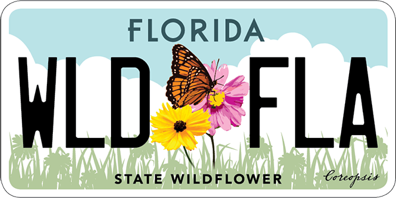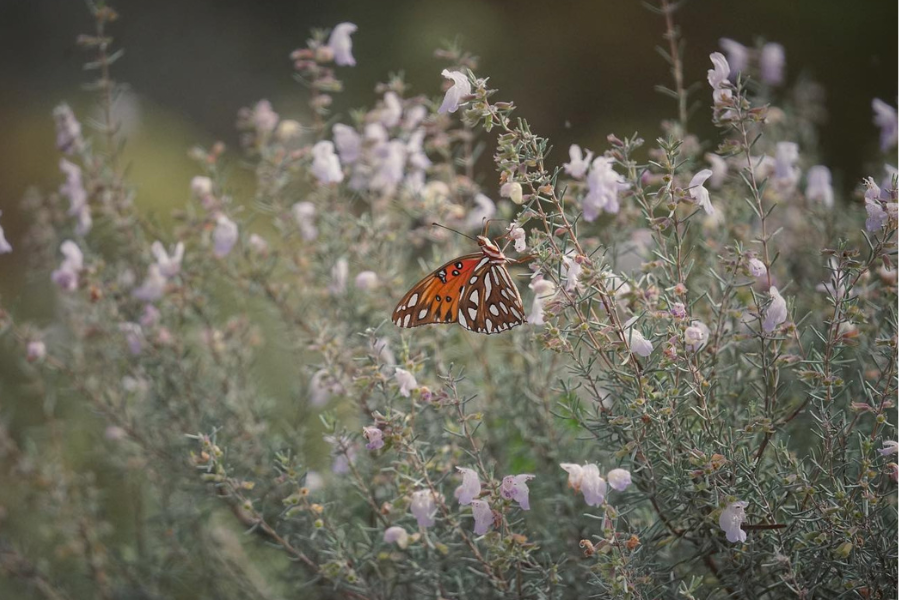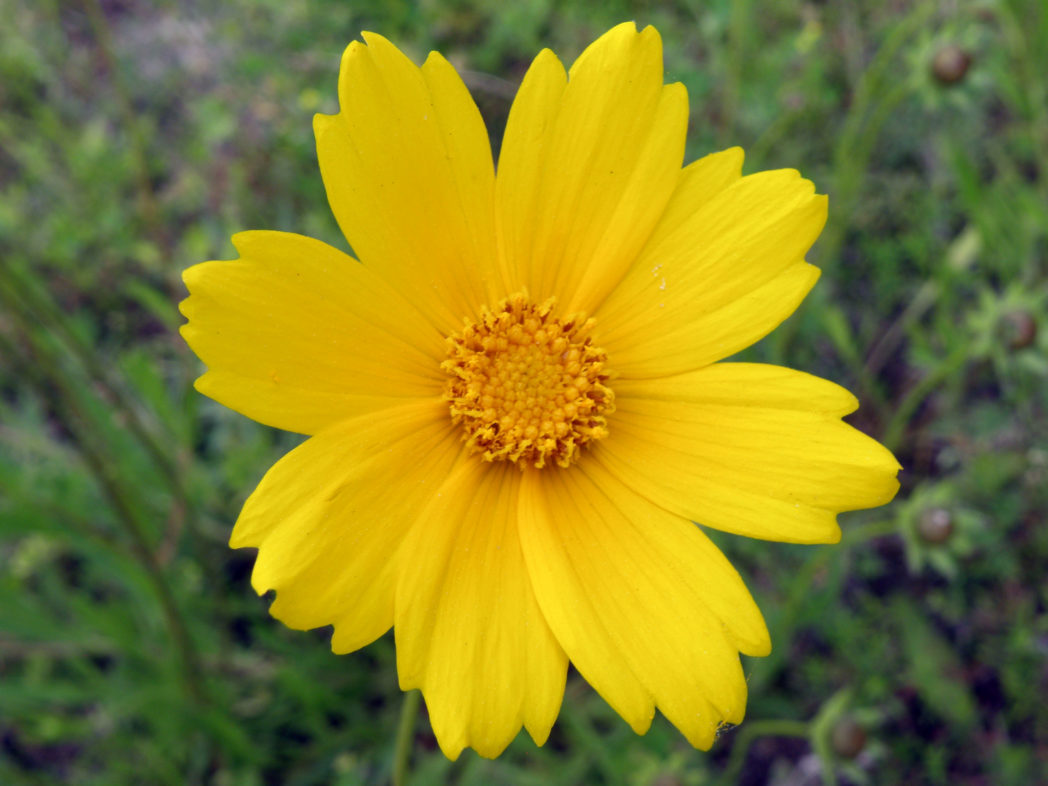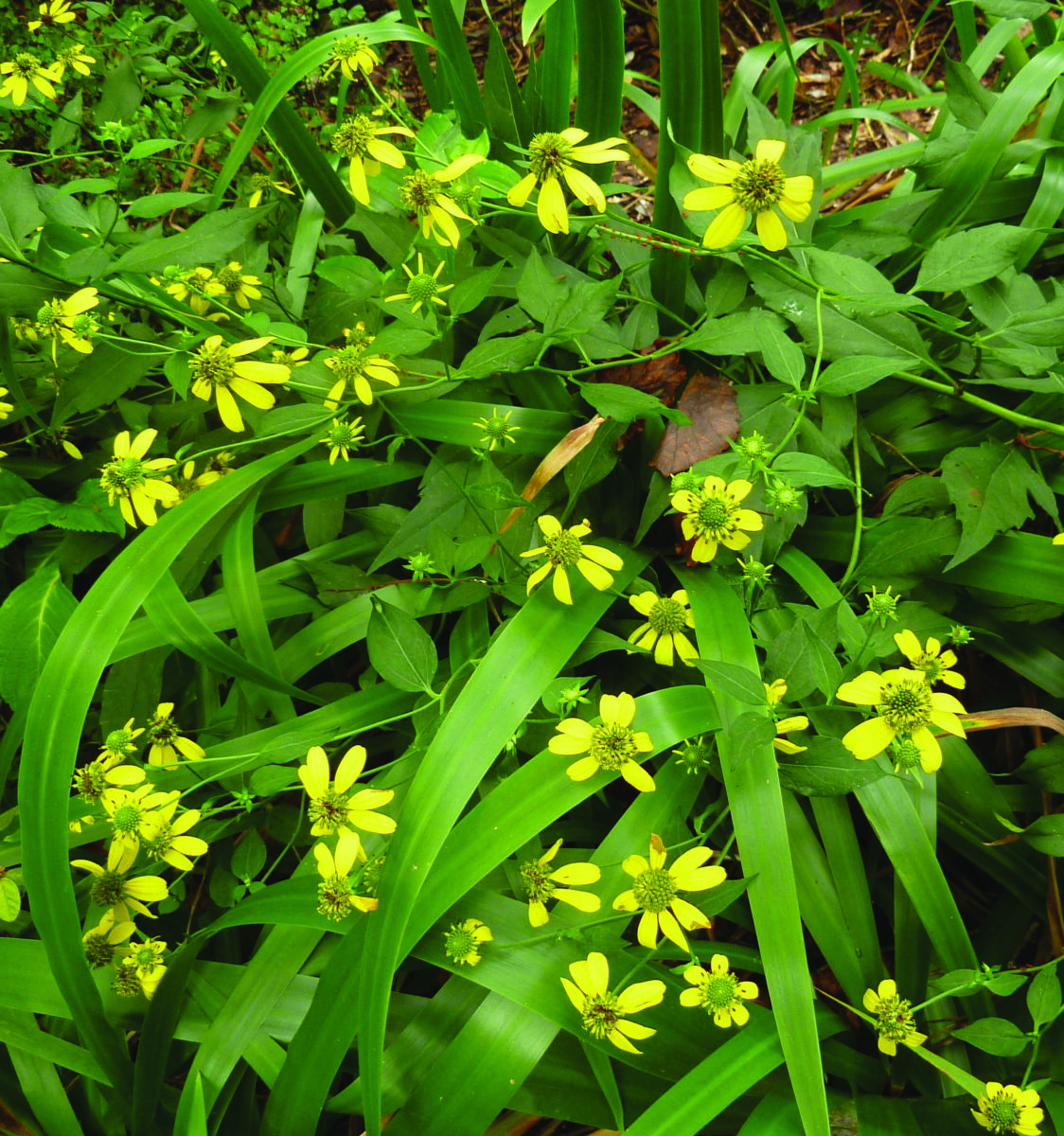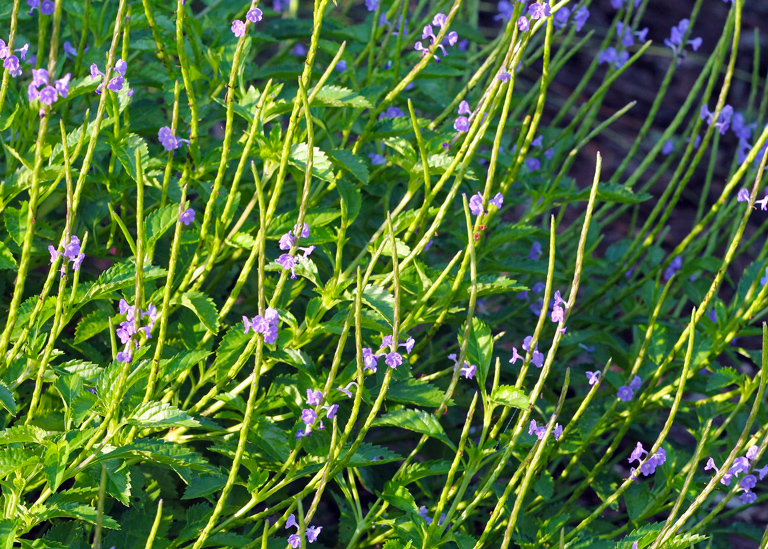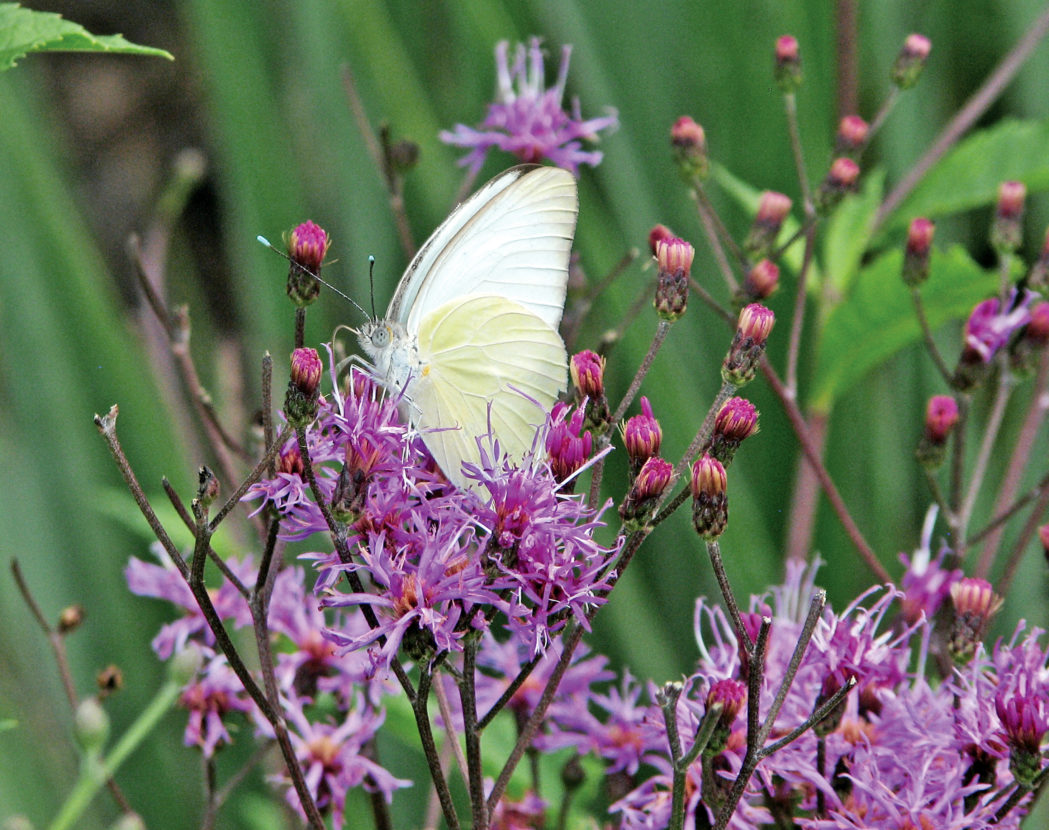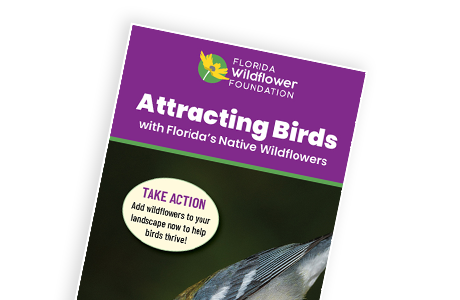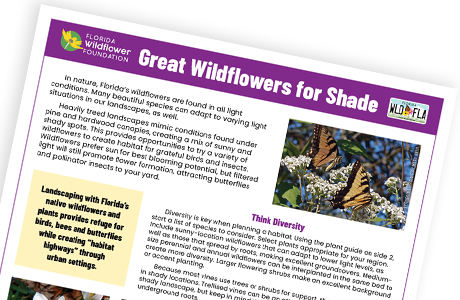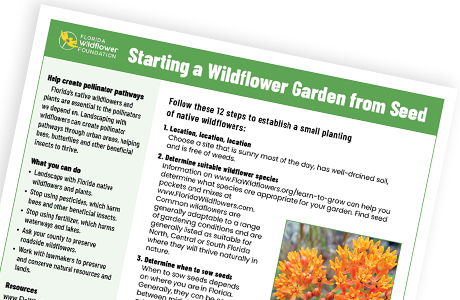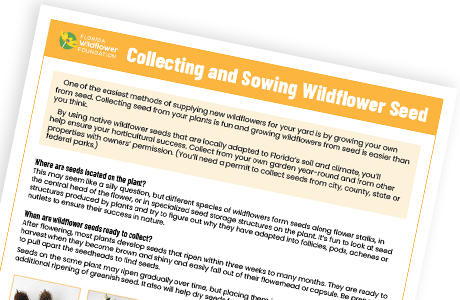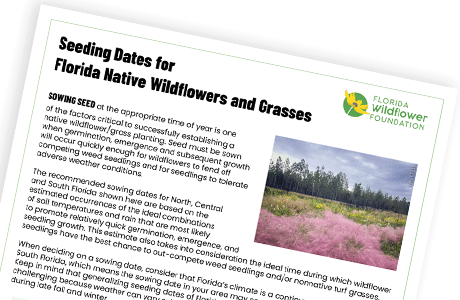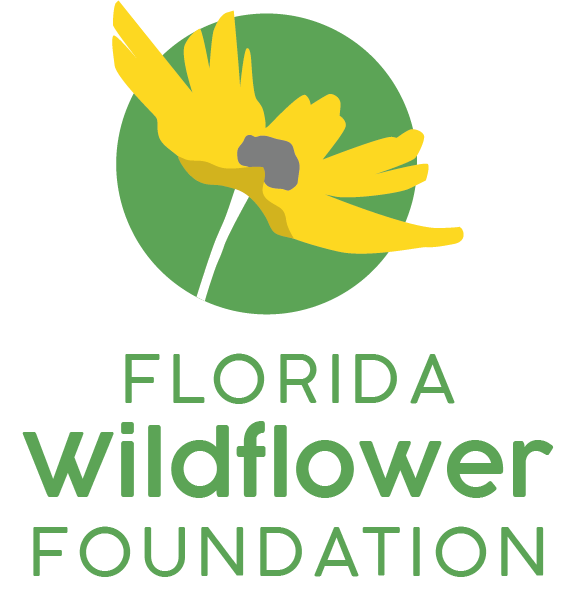Bee City Gainesville—Peaceful Paths Native Plant Garden
This demonstration garden was designed by Claudia Larsen, with site prep by Bee Good Landscaping. It was planted by volunteers. The garden utilizes Florida native wildflowers, grasses and shrubs that provide vital resources for native butterflies, bees, birds and other wildlife.
DID YOU KNOW?
Florida native plants are adapted to thrive in our climate, conditions and soil. They need less water than other plants, and require no fertilizers, pesticides or other chemicals. This saves precious water resources and keeps excess nutrients from polluting lakes, rivers and streams.

The City of Gainesville received its Bee City USA designation in November 2022. An initiative of the Xerces Society, Bee City USA’s mission is to galvanize communities to sustain pollinators by providing them with healthy habitat, rich in a variety of native plants and free of insecticides. Pollinators like bumble bees, sweat bees, mason bees, honey bees, butterflies, moths, beetles, flies, hummingbirds, and many others are responsible for the reproduction of almost ninety percent of the world’s flowering plant species and one in every three bites of food we consume.

The Florida Wildflower Foundation protects, connects and expands native wildflower habitats through education, research, planting and conservation. Learn more at FlaWildflowers.org.
Peaceful Paths Native Garden — Featured Plants
The following native species were planted in the Peaceful Paths native plant garden:
False rosemary
Lanceleaf tickseed
Leavenworth’s tickseed
Dune sunflower
Muhlygrass
Manyflower beardtongue
Cutleaf coneflower
Blue porterweed
Giant ironweed
Pollinators need your help!
Help Florida’s wildlife and environment by using native wildflowers and plants in your landscape. Click here to learn more information on planting, selecting and maintaining native plants, or check out these resources:
